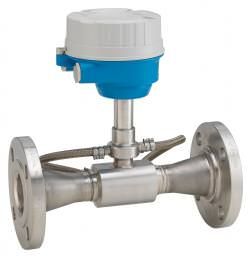New Proline Prosonic Flow E 100 Ultrasonic Flowmeter
Published on by Water Network Research, Official research team of The Water Network in Technology
Endress+Hauser has introduced the Proline Prosonic Flow E 100 ultrasonic flowmeter for measurement of flow, temperature and volume of process water—regardless of conductivity, pressure, density or temperature.
It can measure flow in both directions as well as water temperature, making it ideal for measuring demineralised water in boiler condensate return lines, or monitoring and controlling feedwater temperature. It can also measure flow in water containing magnetite, often found in closed hot water systems for nuclear reactors, wet central heating systems and boilers.

The all-stainless-steel unit works in process pressures up to 363 psi, and in temperatures from 32 to 302°F. It is available in line sizes from 2 to 6 inch for measuring flows up to 1680 gal/min with accuracy of ±0.5% fs. Accuracy is based on accredited calibration rigs according to ISO 17025.
The flowmeter measures volume flow rate by combining all the flow velocities determined by its sensor pairs within the cross sectional area of the meter body with extensive knowledge of fluid flow dynamics. The design of the sensors and their position ensures that only a short straight run of pipe upstream of the meter is required after typical flow obstructions, such as bends in one or two planes.
Process outputs sent via 4-20mA with HART include volume flow, mass flow, flow velocity, temperature and three totalised values. The HART signal also includes diagnostic outputs such as acceptance rate, sound velocity, signal strength, signal to noise ratio, turbulence and signal asymmetry. It also has a pulse/frequency/switch output.
A local display has a 4-line LCD with 16 characters per line, white background lighting, and switches that turn to red in event of device errors. The format for displaying measured and status variables can be individually configured.
It also has a web server interface. By using a standard Ethernet cable and a laptop, users have direct and complete access to all diagnostic, configuration and device data on-site—without the need for additional software or hardware. This enables targeted maintenance and service, thus saving time.
Source: Engineer Live
Media
Taxonomy
- Technology
- Flowmetering
- Infrastructure
- Pumps
- Infrastructure Management
- Pump